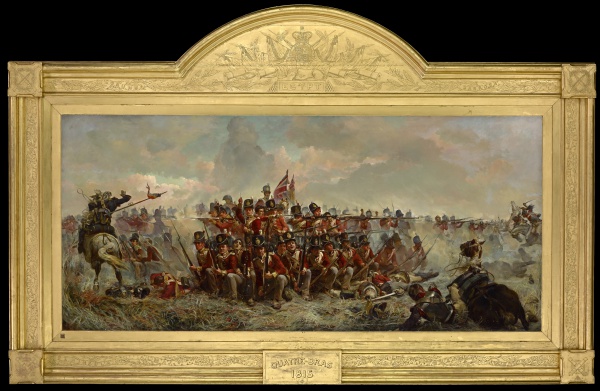Facts About 28th Regiment at Quatre Bras
"The 28th Regiment at Quatre Bras" is an impressive oil painting on canvas by Elizabeth Thompson, completed in 1875. This striking artwork, now part of the National Gallery of Victoria's collection in Melbourne, Australia, measures 97.2 centimeters in height and 216.2 centimeters in width.
Thompson based her meticulously detailed work on Captain William Siborne's book, "History of the War in France and Belgium in 1815" which chronicles the intense Battle of Quatre Bras on June 16, 1815. During this engagement, the 28th (North Gloucestershire) Regiment of Foot of the British Army valiantly defended against French cavalry assaults.
To ensure the utmost accuracy in her painting, Thompson undertook extensive preparation. She had soldiers pose in formation and fire their rifles to authentically capture the scene. For the French cavalry, she used models from Sanger's Circus and the Horse Guards. To replicate the setting, she even had children trample a rye field in Henley-on-Thames. Although she commissioned replicas of historical uniforms, a minor historical inaccuracy remains: the shako depicted in the painting is incorrect, as the 28th Regiment actually wore older stovepipe shakos during the Hundred Days campaign.
When the painting was exhibited at the Royal Academy Summer Exhibition in 1875, it garnered significant attention. The National Gallery of Victoria acquired it in 1884. The painting's prominent gold frame is inscribed with "Egypt" at the top and "Quatre-Bras 1815" at the bottom, enhancing its historical significance.
Thompson's meticulous attention to detail and dedication to historical accuracy have made "The 28th Regiment at Quatre Bras" a standout piece in her artistic oeuvre.
